Bhaktapur Durbar Square : History, Heritage & Legacy of Nepal's Ancient Capital
Planning a Trip to Nepal?
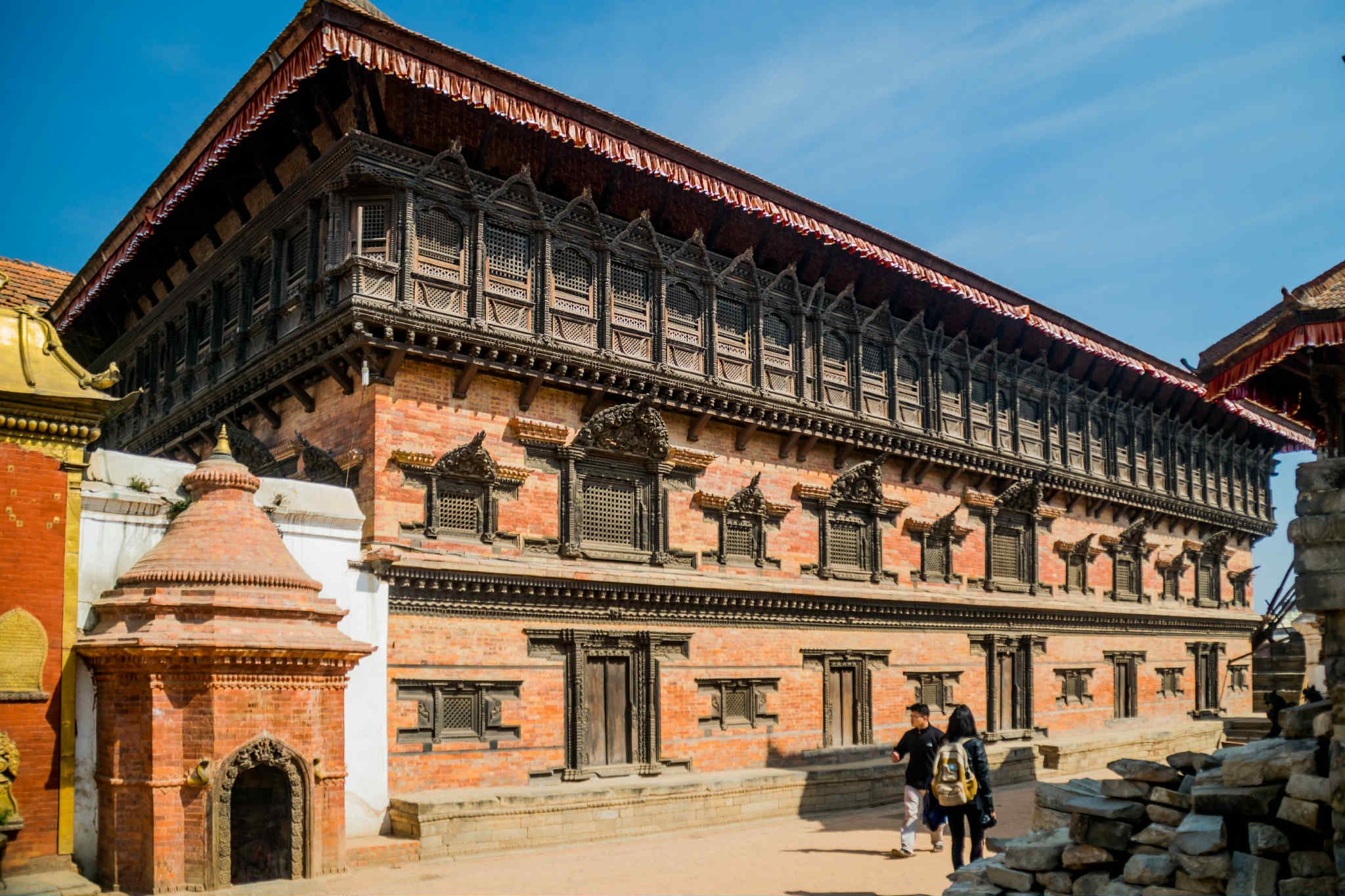
Nestled in the eastern part of the Kathmandu Valley, Bhaktapur Durbar Square stands as one of Nepal’s most enchanting and culturally rich heritage sites. Known for its well-preserved medieval architecture, intricate woodwork, and vibrant traditions, Bhaktapur Durbar Square offers a fascinating window into Nepal’s Malla dynasty era and Newar civilization. This UNESCO World Heritage Site in Nepal is not only an architectural gem but also a living center of art, religion, and community life that has survived centuries of change and adversity—including the devastating 2015 earthquake.
In this detailed blog, we explore the history of Bhaktapur Durbar Square, tracing its origins, evolution, cultural significance, and the ongoing restoration efforts that have helped preserve its timeless beauty for future generations.
Introduction to Bhaktapur Durbar Square
Bhaktapur, meaning “City of Devotees,” was one of the three medieval city-states of the Kathmandu Valley along with Kathmandu and Patan. The Durbar Square—the royal palace complex at its core—was the seat of the Malla kings, who ruled Nepal from the 12th to the 18th centuries. The square served as the political, religious, and social heart of Bhaktapur, housing the royal residences, temples, courtyards, and marketplaces.
Unlike Kathmandu and Patan, which underwent significant modern development, Bhaktapur has maintained much of its ancient urban fabric, making its Durbar Square a pristine example of Newar architecture and craftsmanship. Its narrow lanes, traditional houses, stone fountains, and lively plazas exude a timeless charm.
Location of Bhaktapur Durbar Square
Bhaktapur Durbar Square is located in the heart of Bhaktapur city, about 13 kilometers (8 miles) east of Kathmandu, the capital of Nepal. Positioned along the ancient trade route between Tibet and India, Bhaktapur historically served as a vital economic and cultural hub in the Kathmandu Valley.
The square lies at an altitude of approximately 1,400 meters (4,600 feet) and is easily accessible via the Arniko Highway, with a drive taking 30–45 minutes from central Kathmandu, depending on traffic. Public buses, tourist shuttles, and private taxis frequently travel this route, making it a convenient destination for both local and international visitors.
Surrounded by traditional Newar neighborhoods, the square is a pedestrian-friendly zone where vehicles are restricted, allowing travelers to explore the historic monuments, narrow brick-paved alleys, and open courtyards on foot in a peaceful, heritage-rich environment.
Cultural and Religious Significance
Bhaktapur Durbar Square is not merely a historic site but a vibrant cultural hub where festivals, rituals, and daily life intertwine.
- The Bisket Jatra festival, celebrated every April, marks the Nepali New Year and features traditional chariot processions, masked dances, and ancient rituals centered around the square.
- The square’s temples and courtyards continue to serve as important places of worship for both Hindus and Buddhists, reflecting the syncretic spiritual traditions of the Newar people.
- Artisans working in the square preserve centuries-old crafts such as wood carving, metalwork, pottery, and thankas (religious scroll paintings), passing skills from generation to generation.
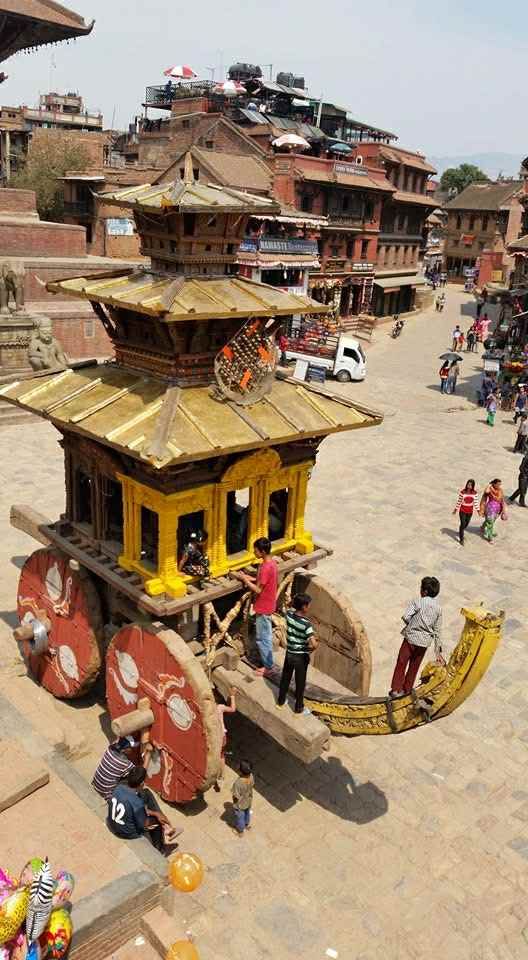
Historical Origins and Development
The Malla Dynasty and Bhaktapur’s Rise
Bhaktapur Durbar Square’s history is deeply intertwined with the Malla dynasty, who consolidated their rule over the Kathmandu Valley starting in the 12th century. The Mallas were great patrons of art, culture, and religion, commissioning numerous temples, palaces, and public works.
- The 55-window palace, one of the iconic structures in the square, was built in the 15th century by King Yaksha Malla and expanded by his successors. Its elaborately carved wooden windows and brickwork remain masterpieces of Newar artisanship.
- The square flourished between the 14th and 17th centuries under rulers such as King Bhupatindra Malla, who left a lasting legacy of architectural marvels including the Nyatapola Temple and Vatsala Temple.
Nyatapola Temple: A Symbol of Malla Grandeur
The Nyatapola Temple, built in 1702, is the tallest pagoda-style temple in Nepal, soaring five stories high at nearly 30 meters (98 feet). Dedicated to the goddess Siddhi Lakshmi, it is celebrated for its perfect proportions, intricate wood carvings, and guardian statues of mythical animals and warriors guarding each tier.
- Nyatapola reflects not only religious devotion but also the engineering genius and artistic excellence of the Newar craftsmen.
- It survived the 2015 earthquake with minimal damage, a testament to the advanced construction techniques of the Malla era.
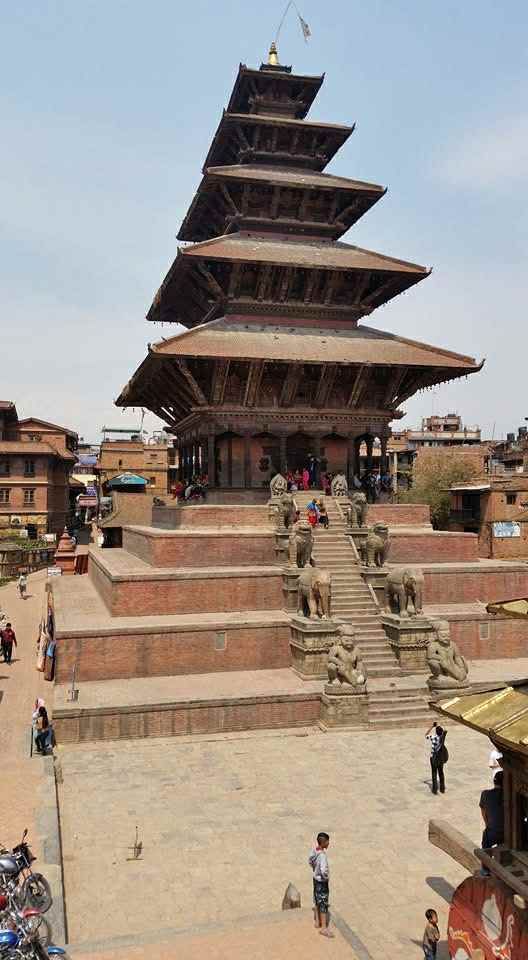
Palace of Fifty-Five Windows and Other Royal Structures
The Palace of Fifty-Five Windows served as the royal residence and administrative center. It is renowned for its elaborate wooden windows, finely carved struts, and courtyards. Inside, the palace houses the Bhaktapur Museum, which preserves royal artifacts, ancient manuscripts, and traditional artworks.
Other notable structures in the square include:
- Vatsala Temple, a beautiful Shikhara-style stone temple, famous for its massive bell.
- Dattatreya Temple, dedicated to the Hindu trinity Brahma, Vishnu, and Shiva, showcasing exquisite carvings.
- Changunarayan Temple, the oldest Hindu temple in Nepal, dating back to the 4th century, and contains exquisite stone carvings and inscriptions that provide insights into early Nepali civilization.
- Taleju Bhawani Temple, dedicated to the royal goddess Taleju, was constructed in the 16th century and served as the palace’s protective deity. This temple is traditionally opened only once a year during the Dashain festival and remains a vital part of Bhaktapur’s spiritual fabric.
- Taleju Bell, also known as the “Bell of Barking Dogs”, a large bell erected by King Ranjit Malla in the 18th century. It was traditionally rung during worship at the Taleju Temple and is said to have once caused dogs across the city to howl, hence its nickname.
- Yaksheswor Temple, which was built in the 15th century by Yaksha Malla, can be found within the square. It was intended to look like the Pashupatinath temple in Kathmandu, so it was designed. On the wooden beams were carvings that were suggestive of sexual activity.
- Bhandarkhal Complex, the Indrayani Temple, the Siddhi Laxmi Temple, the octagonal Chyasin Mandap, the Shiva Temple (Fasi-dega), the Vatsala Temple, Balakhu Ganesh Temple, the Chatuhma Mahavihar, the Tripura-Sundari Temple, and the Char Dham are all located in the area surrounding the plaza.
- Pottery Square, there is a square that is well-known for its pottery, and its name is Pottery Square. Similarly, there is a temple that has been around since the 14th century and is dedicated to Jeth Ganesh.
- Siddha Pokhari, tucked beside the main city gate of Bhaktapur, Siddha Pokhari stands as a tranquil witness to centuries of Nepalese history. Built during the reign of King Yakshya Malla in the early 15th century, this human-made pond is not only the oldest of its kind in the city but also one of its most serene and culturally rich attractions.
- Various courtyards (called bahals and chowks) used for religious rituals and community gatherings.
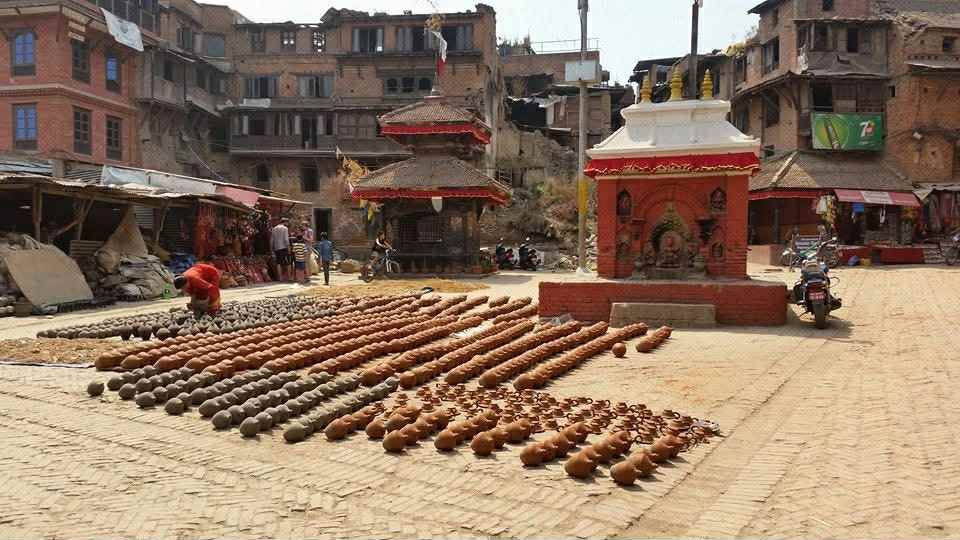
Nepal Cultural Tour Packages We Offer
- Tour to Kathmandu, Bhaktapur & Patan
- Nagarkot Tour with Kathmandu, Bhaktapur & Changunarayan
- Tour of Kathmandu, Patan, Bungmati, Khokna & Bhaktapur
- Kathmandu, Nagarkot & Dhulikhel Tour
- Kathmandu and Pokhara Tour
- Kathmandu, Pokhara & Chitwan Tour
- A Classic Tour to Kathmandu, Chitwan, Lumbini, Pokhara & Bandipur
- Kathmandu, Pokhara & Jomsom Tour with Jungle Safari in Chitwan
- Kathmandu, Pokhara, Jomsom, Lumbini & Janakpur Tour
- Nepal Cultural Tour with Chandragiri Hills
- A Day Tour in Kathmandu
Preservation and UNESCO World Heritage Designation
Bhaktapur Durbar Square was inscribed as a UNESCO World Heritage Site in 1979, along with Patan and Kathmandu Durbar Squares. The designation acknowledged its universal value as a cultural and historical treasure. The local government, in collaboration with national and international conservation agencies, has developed sustainable tourism policies and preservation plans to protect the square for future generations.
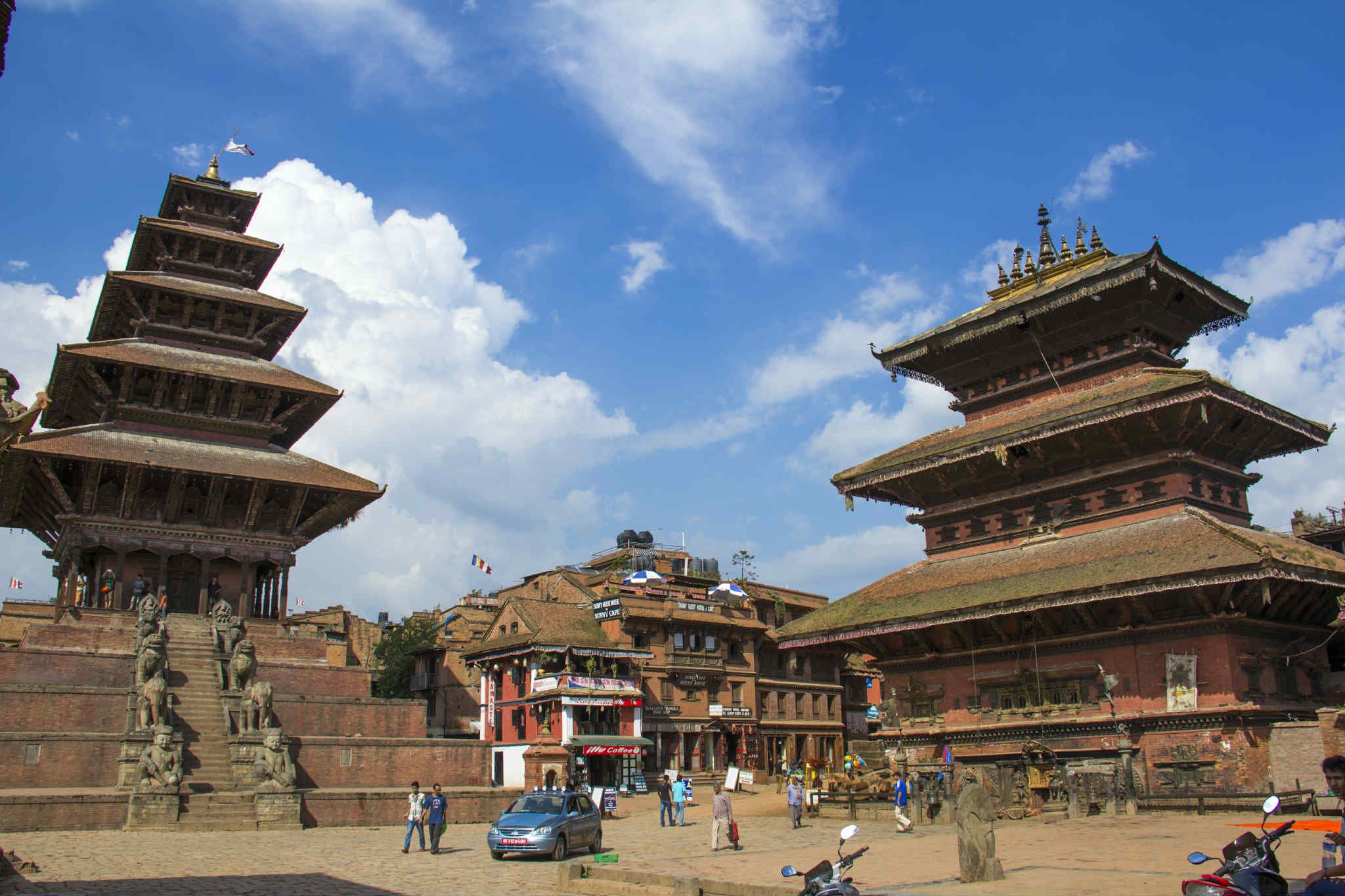
Modern History and Earthquake Restoration
1934 Earthquake
2015 Earthquake
The April 2015 Nepal Earthquake was another devastating blow. Many structures, including the Vatsala Temple and palace walls, were severely damaged or collapsed. However, a large-scale restoration campaign, supported by UNESCO and various international and local organizations, has since brought many monuments back to their former glory.
As of 2025, many of the major structures have been reconstructed using traditional Newar materials and techniques, including brick masonry, timber joinery, and terra-cotta elements. These efforts have reinforced the square's role as a living museum and cultural heart of Bhaktapur.
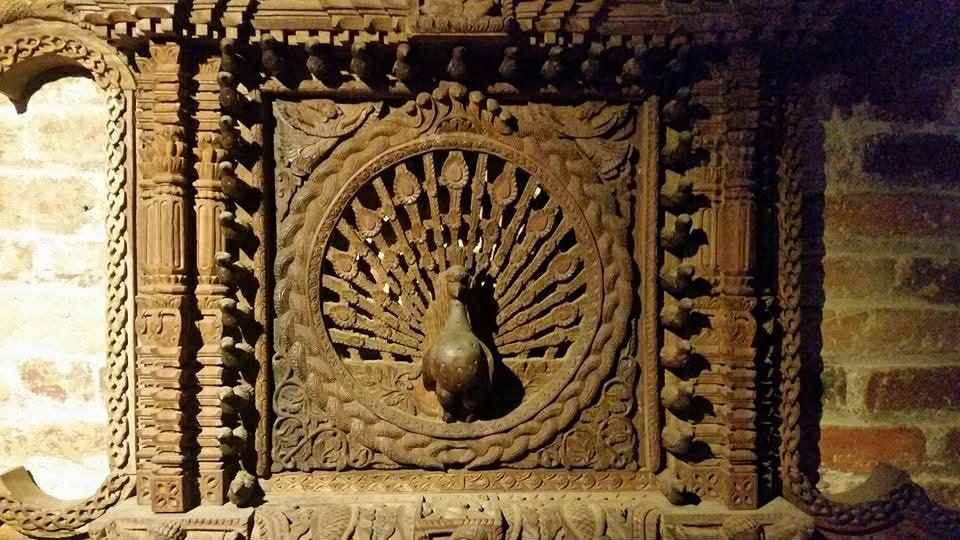
Visiting Bhaktapur Durbar Square Today: What to Expect
- The square is open daily from 9 AM to 5 PM, with an entry fee of approximately Rs 1,500 for foreign visitors.
- Visitors can explore the beautifully restored palaces, temples, and museums, guided by local experts who bring the history to life.
- The surrounding streets offer an immersive experience of traditional Newar culture, with pottery workshops, local eateries serving authentic Newari cuisine, and vibrant markets selling handicrafts.
Special cultural events and festivals throughout the year provide unique opportunities to witness centuries-old traditions in their original settings.
Educational and Artistic Legacy
Bhaktapur Durbar Square has long been a center for learning and craftsmanship. Traditional arts like Paubha painting, pottery, bronze casting, wood carving, and stone masonry continue to thrive in surrounding neighborhoods such as Pottery Square and Dattatreya Square.
Many educational institutions and museums, including the National Art Museum, Woodcarving Museum, and Brass & Bronze Museum, are situated within the square and palace complex.
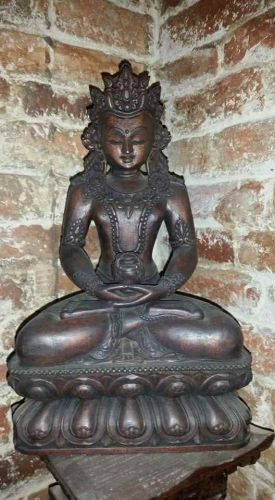
Conclusion: A Testament to Nepal’s Glorious Past
Bhaktapur Durbar Square is a timeless treasure of Nepal’s cultural heritage, encapsulating centuries of artistic brilliance, religious devotion, and royal grandeur. Its history, rooted in the Malla dynasty’s golden era, continues to inspire visitors from around the world. Thanks to dedicated restoration efforts and the resilient spirit of the local community, Bhaktapur’s medieval marvels have endured into the 21st century.
For travelers seeking an authentic and enriching experience, a visit to Bhaktapur Durbar Square offers not just a walk through history but a deep connection to the soul of Nepal’s past and present.
Let us help you plan your Bhaktapur Tour or any other tours in Nepal and Nepal tours can also be combined with hiking and trekking trips in Nepal/Tibet/Bhutan. CONTACT US today to explore itineraries, custom options, and dates that work for your group or solo travel plans!
Follow us on Facebook and Instagram and plan your next holiday trips in Nepal with us. We will do our utmost to organize the best tour in Nepal you can think of.


